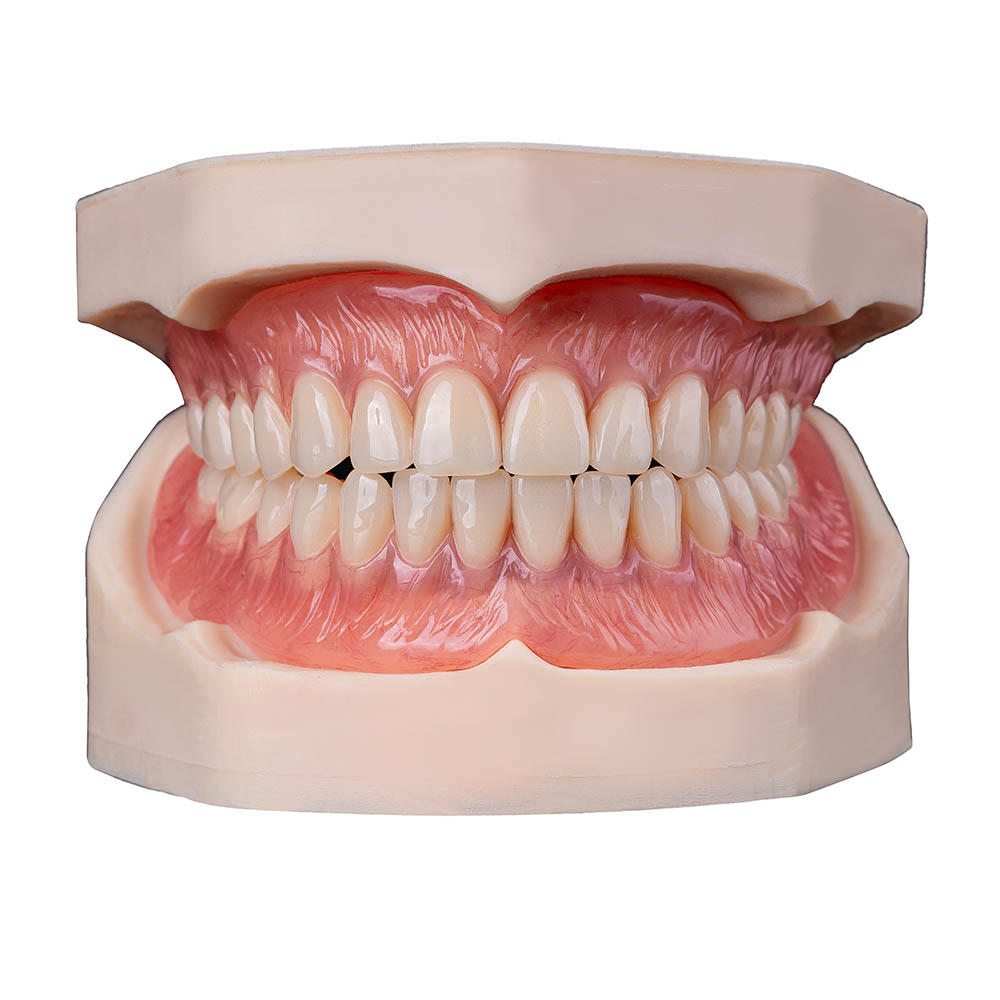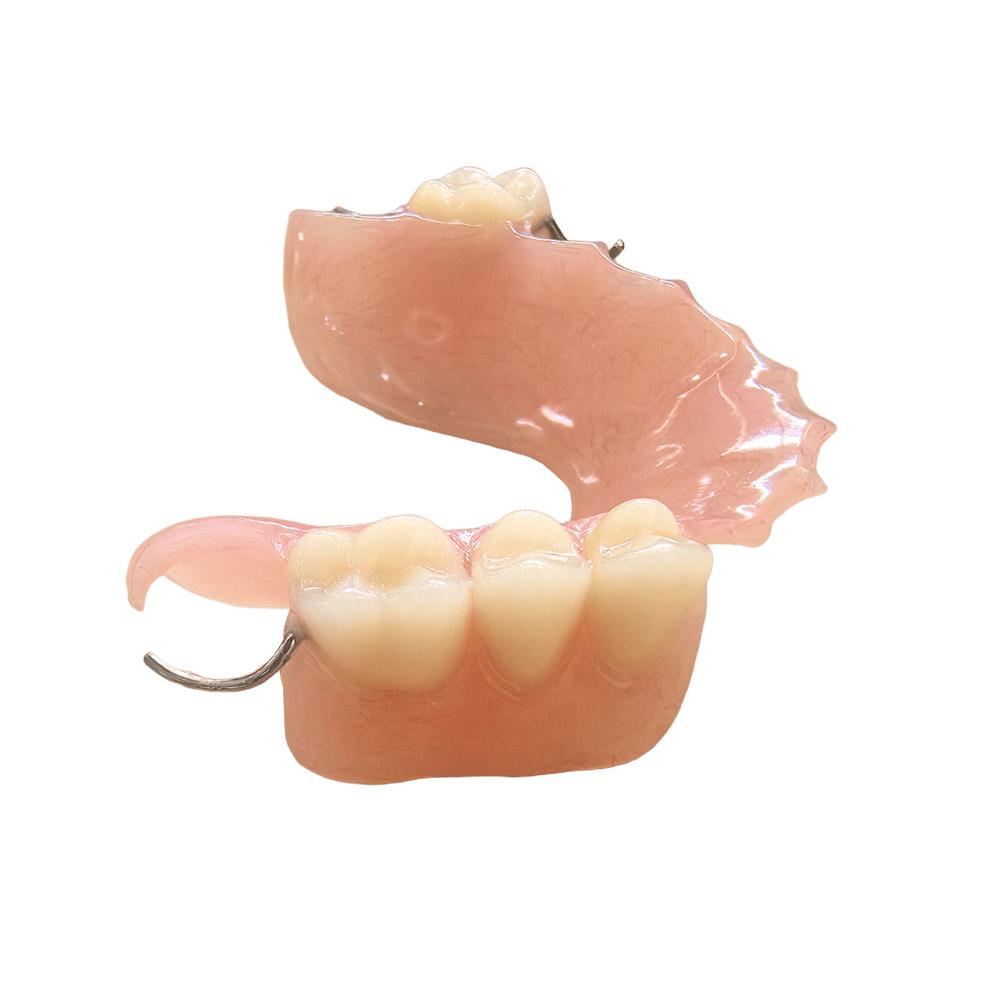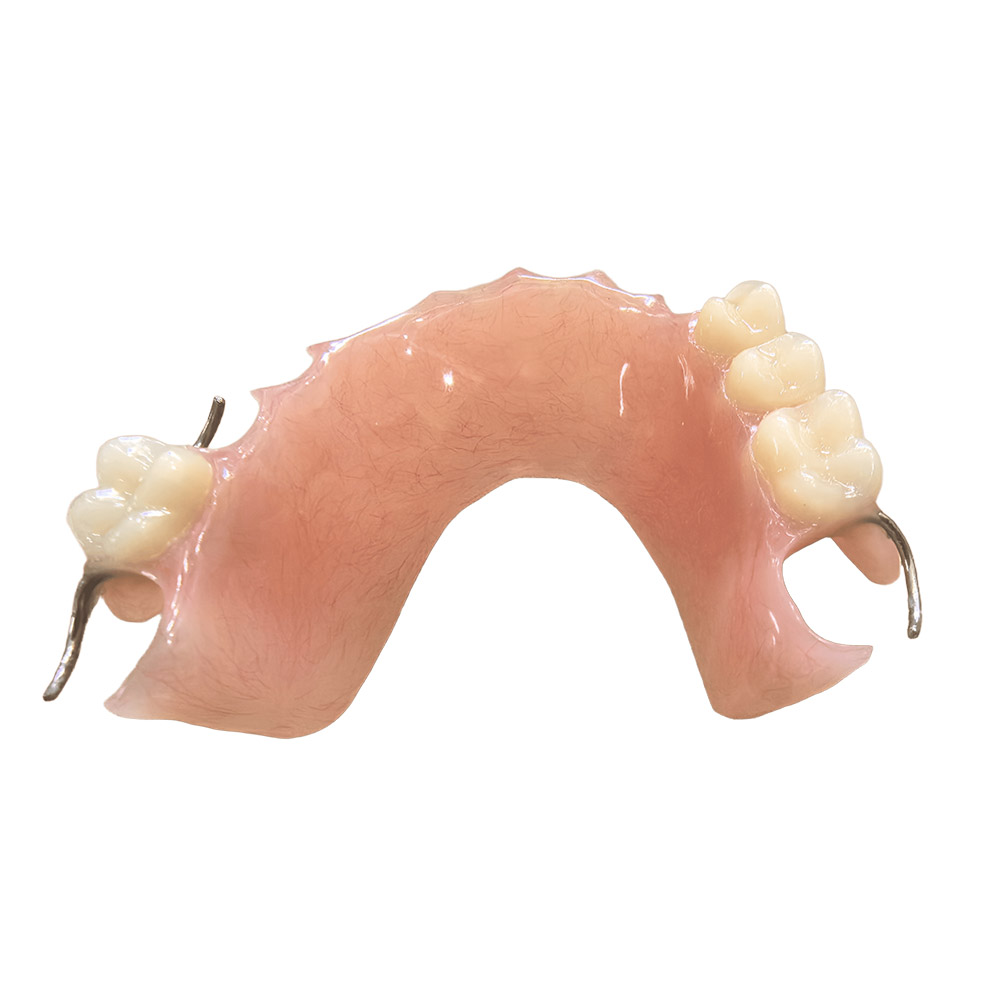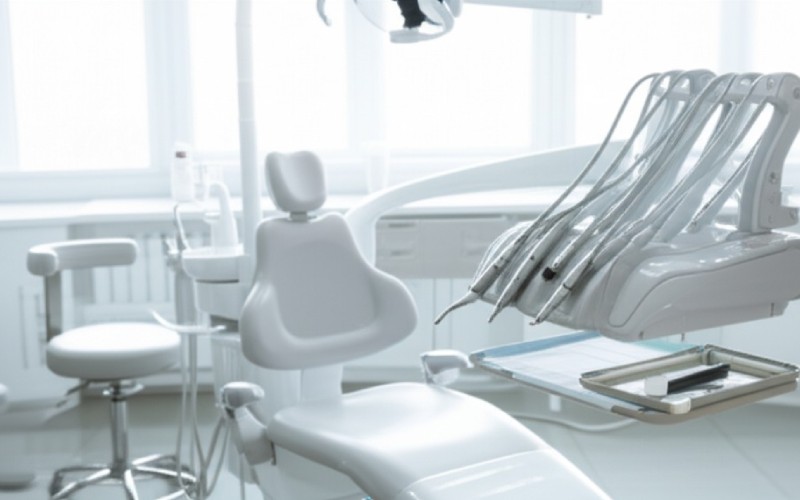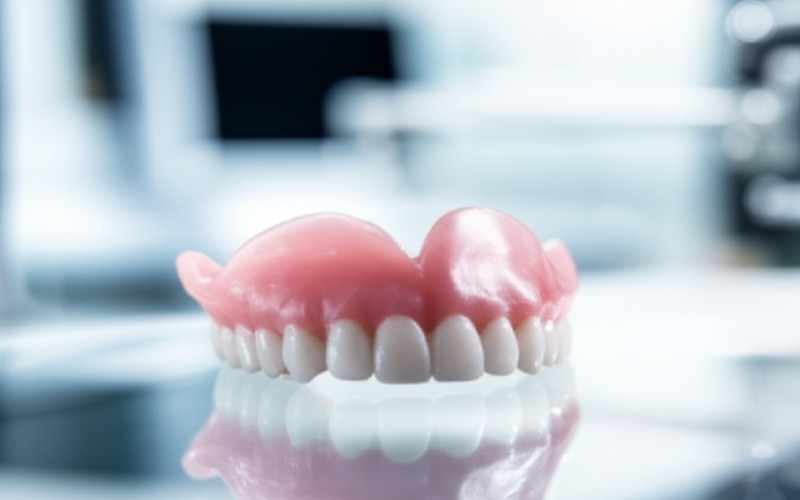Palateless Dentures
Team Up with Istar Dental Lab for Excellent Palateless Dentures
We understand that you and your dental clinics need partners you can count on. You need options that fit your budget and get work done quickly. We offer a top-quality dental lab service for all kinds of dental practices, from a single dentist to big dental hospitals. We want to help you fix a common problem for patients: the issues with regular upper dentures. The answer is here: palateless dentures.
Palateless dentures are a big change in how dentures are designed. The main idea is to get rid of or greatly reduce the plate on the roof of the mouth, leaving the patient’s palate open. This new design directly solves the main problems patients have with regular dentures:
- Gagging: A large number of people who wear full dentures, around 10–20%, have a serious gagging problem caused by the plate covering the roof of their mouth. This can be a small bother or so bad they can’t wear them at all, often leading them to give up on their dentures. Our palateless designs lessen this problem, offering a more comfortable experience they can handle, especially for patients with a very sensitive gag reflex or differences in their mouth’s shape.
- Trouble Tasting: The plate on the roof of the mouth physically covers up the taste buds and lowers the amount of saliva flowing over them. This leads to a weaker sense of taste. Studies show a noticeable drop, with an average decrease of 15–25% in the ability to tell tastes apart. Palateless dentures bring back the natural feeling of taste, making eating much better and more enjoyable.
- Difficulty Speaking: The size and shape of the plate can make it hard to say certain sounds. Sound analysis shows a clear increase in slurred speech, and up to 30% of new denture wearers say they have speech problems that don’t go away. Our designs help with more natural speech, which improves patient confidence and communication.
- Feeling Bulky or Like a Foreign Object: What patients tell us always points to “bulkiness” and “feeling like something is in my mouth” as the main problems. Surveys show that most people who answered say the plate feels “moderately” or “severely” uncomfortable, which is directly linked to them wearing their dentures less often. Palateless designs offer a lighter feel that’s less in the way, making daily life much more comfortable.
- Less Feeling of Hot and Cold: The plate covers the skin in the mouth, lessening the feeling of food temperature. Studies show a 40–60% drop in the ability to feel hot and cold. By leaving the palate open, our solutions let patients fully feel food temperatures, which helps them enjoy food more and be safer.
- Emotional and Social Effects: All these problems together can lead to avoiding social events, feeling embarrassed during meals, and lower self-confidence. Palateless dentures ease these problems, building more confidence and encouraging social activity, especially for younger patients with no teeth and those who are very social.
At Istar Dental Lab, we use modern technology and materials to get past the old problems of palateless designs. We make sure they have the best hold, are stable, and last a long time. Our promise is to offer solutions that not only fix these important patient problems but also raise the quality of care in denture dentistry.
Types and Current Uses in Clinics
Palateless denture solutions come in many forms, made to fit different patient situations and needs. At Istar Dental Lab, we offer a full selection of these advanced dentures. Each one is designed with specific uses and benefits to give patients the most comfort and best results. Our types include:
Complete Palateless Dentures (Not Held by Implants)
These are made for patients with no teeth who might not be good candidates for implants because of their mouth’s shape, health issues, or cost. While it’s hard to get a great hold without the plate, our new methods make them work much better:
- Who they are for: Patients with healthy jaw ridges, enough saliva, and a strong wish to not have their palate covered. They are also good for those looking for a cheaper choice than implant-held options.
- Benefits: Gets rid of the plate on the roof of the mouth, which improves taste, speech, and comfort. Costs less than implant-held options.
- Downsides: The hold and stability can be a problem if the jaw ridge has shrunk a lot or the mouth tissue is not healthy. This often means special methods are needed to keep them in place.
Partial Palateless Dentures
For patients missing only some teeth, these are a much better choice than regular removable partial dentures (RPDs), which often have large connectors on the roof of the mouth.
- Who they are for: Patients with enough healthy natural teeth for support who want a metal-free, good-looking, and less intrusive partial denture.
- Benefits: Looks better, is more comfortable, and interferes less with speech and taste compared to RPDs that cover the whole palate. They are often made with flexible or very strong polymers so patients like them more.
- Downsides: Needs enough natural teeth for support and can still have problems with staying stable over time if not designed and cared for correctly.
Implant-Retained Palateless Dentures
This type is the best option for upper jaws with no teeth, offering amazing stability, hold, and patient happiness. Our skill in digital implant planning and denture making ensures the best results.
- Who they are for: Patients with no teeth who have enough bone for implants, or who need bone added. Perfect for patients who want the biggest improvement in function and comfort.
- Benefits:
- Last a Long Time: Long-term studies always show that implants last more than 95% of the time over 5-10 years, no matter if 2, 4, or 6 implants are used, as long as the right steps are followed.
- Better Stability and Spreading of Force: Four-implant and All-on-4/6 designs spread chewing forces better and reduce denture movement. This is very important in the upper jaw where bone can be weaker.
- Much Happier Patients and Better Quality of Life: What patients report shows big improvements in chewing, speaking, and tasting. Satisfaction scores are 20-30% higher than with regular full-palate dentures. Patients say they are happier with how clearly they can speak and chew.
- Fewer Problems: While breaking a denture tooth (10-20% over 5 years) and peri-implant mucositis (up to 30%) are common, rates of peri-implantitis are usually under 10% with regular check-ups.
- Good Value for Money: Even though the first cost is higher, financial studies show that 4-implant or All-on-4/6 solutions are a better deal in the upper jaw over the long run because they have fewer failures and problems than 2-implant options.
- Things to Think About with Attachments:
- Locator-type attachments: These are popular but may need to be serviced more often (like replacing inserts every 1-2 years).
- Bar attachments: These make the denture more stable but require very careful cleaning to prevent peri-implant mucositis.
- Telescopic crown attachments: These give a great hold and are easy to clean but cost more and are harder to make. Our lab is skilled at making all types and can help our partners choose the best one.
- Reasons Not to Get Them: Severe teeth grinding (bruxism), uncontrolled diabetes, and heavy smoking are often reasons not to get them, or to be very careful, because of a higher risk of implant failure.
At Istar Dental Lab, we focus on the patient. We work closely with our clinical partners to pick the best palateless denture solution. Our skill in digital planning and modern manufacturing makes sure that every denture is carefully designed for the best fit, function, and long life, meeting the special needs of every patient.
Materials and Technology
The success of palateless dentures depends on the new materials and clever ways they are held in place. At Istar Dental Lab, we are leading the way in adding these new ideas to our making process. This ensures our dentures have great performance, last a long time, and are comfortable for patients.
Advanced Materials for Bases and Teeth
We use a variety of top-quality materials that are better than old-fashioned acrylics in strength, safety for the body, and looks:
- High-Performance Polymers (PEEK and PEKK): PEEK and PEKK are being used more and more for palateless denture bases because they are very strong, don’t absorb much water, and are very safe for the body. PEKK is even more resistant to wear and keeps its shape better, which is very important for thin palateless designs. These materials are mostly made using CAD/CAM milling, which ensures a perfect fit and the same quality every time.
- Zirconia and Lithium Disilicate: For the fake teeth and frames, we use Zirconia ceramics, which are extremely strong and keep their color well. Lithium Disilicate is also used because it looks very natural and is tough, making it great for front teeth that need to look good, especially when made with digital tools.
- Fiber-Reinforced Composites (FRCs): We add glass and carbon fibers to our denture bases to make them stronger and more resistant to breaking from repeated use. These materials greatly lower the risk of fracture in thin palateless dentures and let us adjust their stiffness and toughness.
Different Ways to Keep Dentures in Place
Getting rid of the plate on the roof of the mouth means we need clever ways to hold the denture. We use a mix of mechanical, sticky, and natural methods:
- Bio-Adhesive Technologies: We are trying out new glues inspired by nature, like gel-based systems that stick to the mouth’s surface but can be removed. These hold much better than regular glues, making patients more comfortable and confident.
- Pressure-Sensitive Adhesives (PSAs): Our dentures can include special glues that get stickier when you bite down, helping them stay in place while chewing but still being easy to take out. Early studies with patients have shown they are happier and have less irritation with these advanced glues.
- Natural Suction: We carefully use methods like the “Suction Effective Denture” (SED) approach, changed for palateless upper dentures. This means shaping the edges perfectly to create a seal, often using digital mouth scans and 3D printing. This lets a large number of patients get a stable hold without needing glue, even if their jaw ridges are not in great shape.
- New Mechanical Designs: Our research team is making test versions of palateless dentures with tiny suction cups on the surface that touches the mouth. These create small vacuum areas, making the hold 40–60% better than regular palateless designs.
- Surface Treatments: We use special treatments on the denture bases to make them stick better to the wet surface of the mouth. This can make them stay in place up to 1.5 times longer.
- Better Soft Liners: Our newest silicone-based soft liners have tiny fillers and germ-killing agents. They fit better to the small bumps in the mouth and reduce germ buildup. These liners keep their hold well and don’t break down much over time.
Manufacturing Methods and Cost
The digital change in dentistry has completely changed how palateless dentures are made. It allows for more customization, accuracy, and speed than ever before. At Istar Dental Lab, we have fully adopted these new methods, using the latest digital workflows and 3D printing to give our partners better products and value.
Digital Workflows and 3D Printing
Our process for making palateless dentures is built on a strong digital system:
- Mouth Scanning and Digital Impressions: The process starts with high-quality scans inside the mouth, so we don’t need the old, often uncomfortable, physical molds. This digital information captures the exact details of the patient’s mouth.
- CAD/CAM Design: The digital scan data is then put into advanced CAD (Computer-Aided Design) software. Our skilled technicians, with help from AI design tools, carefully design the palateless denture. This includes making it fit each patient’s unique mouth shape and using digital smile design ideas. Special computer programs are used to create lightweight frames that are strong in all the right places, testing thousands of designs to get the best stress distribution, hold, and comfort.
- 3D Printing:SLA and DLP are our main 3D printing methods for making palateless dentures. These methods create very detailed and smooth surfaces and work with safe, body-friendly resins.
- Customization: 3D printing allows for full digital customization, making sure every denture is made just for the patient’s mouth.
- Fast Production: Digital workflows with 3D printing cut production time from weeks down to just 24-48 hours, including design, printing, and finishing. Our ability to print many at once makes delivery even faster.
- Less Material Waste: 3D printing wastes much less material than carving from a block, cutting waste by up to 80% and saving money on tools and energy.
- Accuracy and Fit: Our 3D-printed palateless dentures fit as well as or better than those made the old way, with an average fit difference of less than 100 microns. This means patients are more comfortable and need fewer adjustments, saving our clinical partners time in the chair.
Partner with Istar Dental Lab Today
Give your patients the best. Offer them the comfort and confidence of palateless dentures. At Istar Dental Lab, we are ready to be your partner. We proudly serve every denture specialist and dental clinic. We even help with emergency dentist cases.
We know you need quality you can trust, a fair price for denture replacement, and a lab that delivers on time. Let us show you the Istar difference. We are experts in everything from partial dentures to full dentures, including special attachment dentures and overdentures supported by natural teeth.
Contact us today to learn more about our low-cost dentures and to get started. Let’s work together to create beautiful, working smiles.






